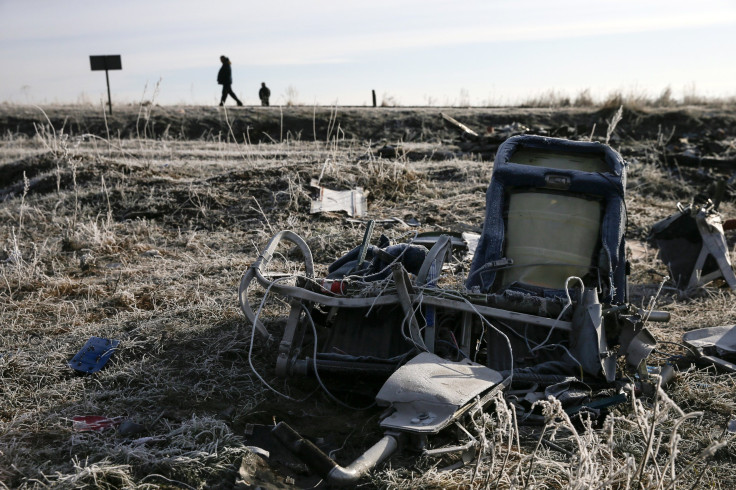MH17: Did Sukhoi-25 Take Down Passenger Plane? Fighter Jet Designer Says Allegations 'A Cover-Up'

Ukrainian Sukhoi-25 fighter jet could not have possibly taken down the Malaysia Airlines Flight MH17, the chief designer of the fighter jet said in an interview to German media. The investigation into the MH17 disaster is ongoing in eastern Ukraine where the aircraft crashed on July 17, 2014, killing all 298 people on board.
“I believe all allegations that a SU-25 could be involved into this tragedy are a cover-up attempt,” Vladimir Babak told German channels NDR and WDR, according to RT News. “I cannot explain it otherwise. We cannot understand how an SU-25 could take down the Boeing."
"The Su-25 could attack a Boeing at a height of three or four thousand meters, but it can't shoot down a plane flying at an altitude of 10,500 meters," he said.
A preliminary report of the investigation into the crash released in September 2014 stated that the jetliner broke apart in mid-air after being hit by “a large number of high-energy objects that penetrated the aircraft from outside.”
Babak, who has been involved in the fighter jet's construction for nearly 30 years, reportedly said that “there would have to have been heavy missiles on the Su-25” in order to make that happen.
"Air-to-air missiles could only cause damage to the Malaysian aircraft, but they could not lead to what happened," he reportedly said. "Many more factors indicate that the Boeing 777 was hit by a ground-to-air missile that was launched from a Buk missile system.”
However, Lt. Gen. Aleksandr Maslov, former deputy chief of Russian air defense and land forces, told RT news that analysis of the plane debris and the nature of the damage caused in the incident indicated that the Boeing 777-200 was hit by an air-to-air missile.
“The published photos [from the MH17 crash site] enable to assume that the Boeing was downed by a military jet. Besides that, the existing damage indicates that the airplane was shot with air-to-air missiles together with an aircraft gun with a 30mm caliber,” Maslov said, according to RT news, adding that claims of the plane being downed by a surface-to-air Buk missile “cannot be supported.”
Former chief commander of Russian Air Force, Vladimir Mikhailov, also disagreed with Babak.
“If the plane was downed by Buk [missile defense system], it would have almost immediately fallen to pieces in the air and we could not have witnessed such large debris on the ground,” he reportedly said.
The crash spread wreckage across an 8 square mile area, where a conflict between rebels and the Ukrainian military has been ongoing since February 2014. Investigators believe that the cause of the crash and how the airplane disintegrated could only be determined after more research into the incident.
© Copyright IBTimes 2024. All rights reserved.





















